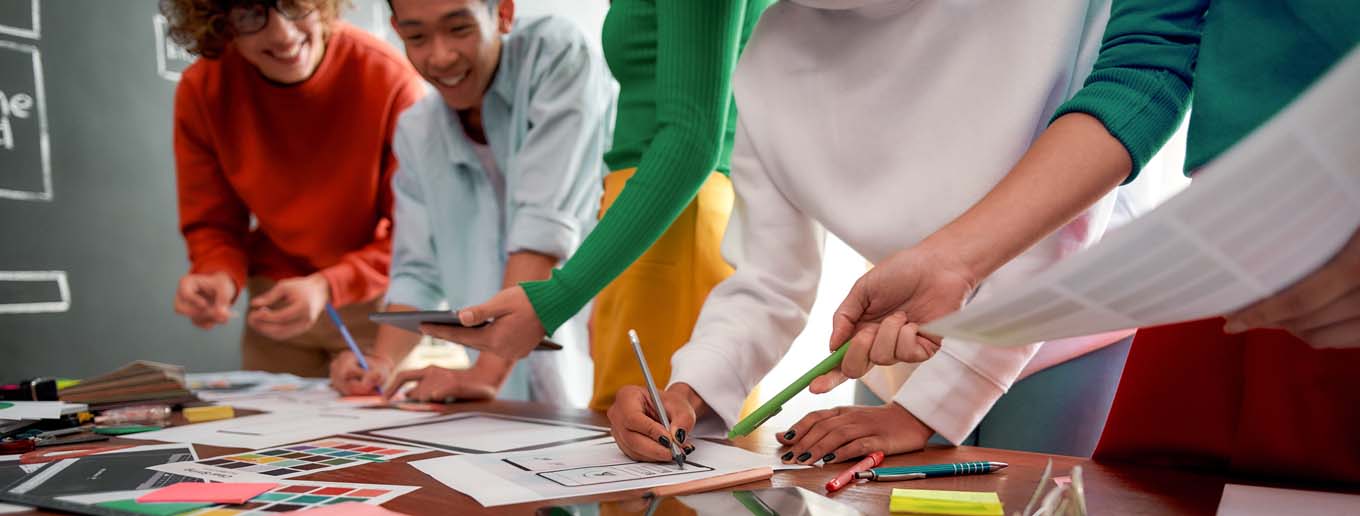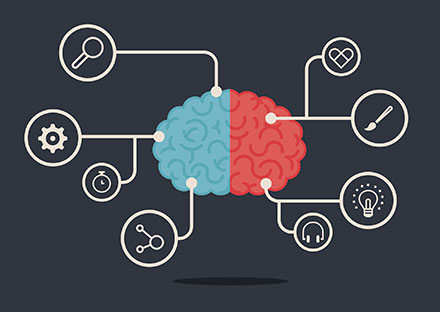Build Your Brand’s Mood Board
A team exercise to assemble the aesthetic of your brand.

A mood board building session is a great small group activity to inspire the direction of a brand. It’s a fast way to make sure your team is on the same page about the design aesthetic and mood boards can be used throughout the design process as a benchmark of success. Use these steps to get started.
What is a mood board?
A mood board is a collection of visual elements put on a board or a page of a document that give a sense of what a brand or campaign should feel like. The images or materials may be from quite disparate sources but put together they show the mood you are aiming for in a brand. Designers use them for inspiration and to test the waters to see if a client is on the same page. Using them in a brainstorming session allows you to get a more diverse perspective on what colors, words, and textures mean to different audiences.
1. Gather up materials
Start by collecting a bunch of materials to give yourself lots of choices. They should include a wide variety of colors, textures, and words. Pick up some paint chips and carpet and tile samples from your local hardware store. Sort through the remnant pile at a fabric store. Collect small toys or knick-knacks from around your house or desk. Gather magazines with a variety of photos and typography. Make sure you have online access to sites like Google Images and Pinterest. If you are going to do this exercise on a regular basis, start a kit or digital folder to add to over time.
2. Pose a problem
This could be as simple as “What should our brand feel like?” Or, you can get your team to think more creatively by posing something that is a bit of a side-step from your ultimate goal—“If this campaign were a room, what would it look like?,” “A destination?,” “An outfit?” Use your imagination to explore different visual avenues. These may or may not eventually lead to tangible outcomes, for example, the décor in your retail store, or the uniforms your staff wears. The main goal is to let your ideas flow.
3. Break into teams
Depending on the size of your group, break up into small teams of 2 – 3 people. Each team can work from the same problem, or you can assign each group a different perspective. Attach items that you feel fit the brand to the board.
4. Share your ideas
Once each team has assembled their mood board, have them share with the group why they chose the pieces they did and how each item on the board connects to the brand. In this exercise, why often matters more than what. Ask a lot of questions during this part of the session and encourage everyone in the group to also do so—not to accuse or challenge, but to listen and absorb. What does fuzzy pink fabric mean to you? Do you see our brand as sleek or comforting? Which of our audiences would be drawn to this?
5. Document and evaluate
Collect notes on what each team did, take photos, and assess the importance and relevance of each element. Bring together the parts that resonated with the most people. Then start to think about what it means for future work: packaging, interiors, color palettes, etc.
In the end you should have a place to start building your brand or campaign. But more than that, you’ll have the consensus you gained in the process.
Kickstart Your Creative Flow
10 steps to get unstuck creatively and let your ideas out into the world.
Left-Brain, Right-Brain
A brainstorming activity for various personalities, work styles, and roles.
Brainstorming Ways to Wow
Small improvements to your product or service can differentiate you in the marketplace.



